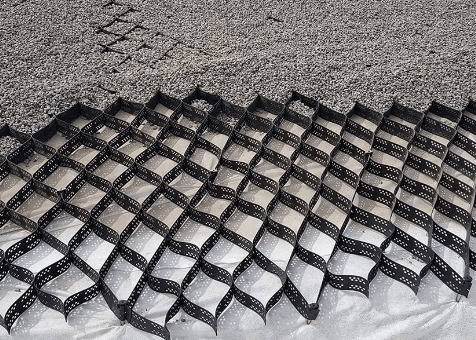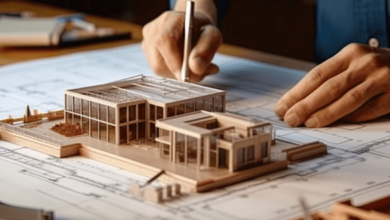How Plastic Geocellular Systems Work in High-Rainfall Areas

Have you ever wondered how cities prevent flooding during heavy rains? Or how do urban planners ensure that water drains efficiently, even in areas with significant rainfall? The answer often lies in an innovative technology known as plastic cellular systems. These systems are crucial in managing water in high-rainfall areas, ensuring communities remain safe and dry.
How Do Plastic Geocellular Systems Function in High-Rainfall Areas?
In regions with heavy rainfall, managing stormwater is a critical challenge. Plastic geocellular systems like Aco StormBrixx offer an effective solution by providing storage space for large volumes of water. Water flows into the geocellular system when it rains, filling the voids between the plastic cells. The water stored within the system can either be slowly released into the soil below, aiding in groundwater recharge, or directed to the central drainage system.
This controlled release prevents sudden surges of water that could overwhelm drainage systems and cause flooding. These systems are especially useful in urban spaces with limited natural water infiltration. The cells create a reservoir for excess water, reducing the risk of surface water flooding.
See also: How is the USA leveraging technology for environmental sustainability?
Adaptation to High-Rainfall Conditions
High-rainfall areas often face the risk of flash floods. Plastic cellular systems are designed to adapt to such conditions. The system’s modular nature allows for customisation based on the expected rainfall. The size and capability of the system can be adapted to accommodate large volumes of water.
During intense rainfall, the geocellular system absorbs and holds water temporarily. This prevents the immediate runoff that could lead to flooding. Over time, the stored water is either absorbed by the ground or redirected, thus reducing pressure on the local drainage infrastructure.
These systems are also designed to be resilient. They can withstand the forces exerted by large volumes of water without collapsing. This durability ensures they continue to operate effectively even under intense weather circumstances.
Environmental Benefits
In addition to preventing flooding, plastic geocellular systems offer environmental benefits. By promoting groundwater recharge, they help maintain the local water table. This is particularly important in high-rainfall areas where excessive runoff could lead to soil erosion and depletion of natural water resources.
These systems also reduce the need for extensive surface drainage infrastructure. By managing water at its source, they minimise the environmental impact of large-scale drainage projects. The use of plastic materials, which are often recycled, also contributes to the sustainability of these systems.
The design of geocellular systems ensures that they integrate seamlessly with the natural environment. They do not disrupt the landscape, allowing vegetation and wildlife to thrive. This makes them an ideal solution for managing stormwater in environmentally sensitive areas.
Installation and Maintenance
One key advantage of plastic cellular systems is their ease of installation. The modular design allows for quick assembly on-site. This reduces construction time and minimises disruption to the surrounding area.
Once installed, these systems require minimal maintenance. The durable plastic cells do not degrade over time, and the system’s design prevents blockages. Regular inspections ensure the system continues functioning efficiently, but extensive maintenance is rarely needed.
In high-rainfall areas, where stormwater management is a regular concern, the low upkeep necessities of geocellular systems are a significant benefit. They provide a reliable, long-term solution without frequent repairs or replacements.
Cost-Effectiveness
Plastic geocellular systems are cost-effective for stormwater management, offering savings in transportation and installation due to their lightweight design. Their long lifespan further spreads the initial investment over many years. This makes them an economical choice for municipalities and developers.
Moreover, because these systems reduce the need for extensive surface drainage infrastructure, they help lower the overall costs associated with stormwater management projects. This makes them attractive for locations that demand effective stormwater solutions without tiring budgets.
Extreme weather occurrences are becoming more common, and plastic geocellular systems like Aco Storm Brixx are vital for managing stormwater. Their adaptability and durability make them ideal for urban planners and engineers. These systems will ensure that high-rainfall areas remain safe and resilient as cities grow.





